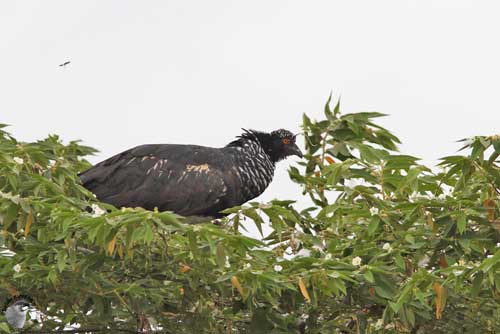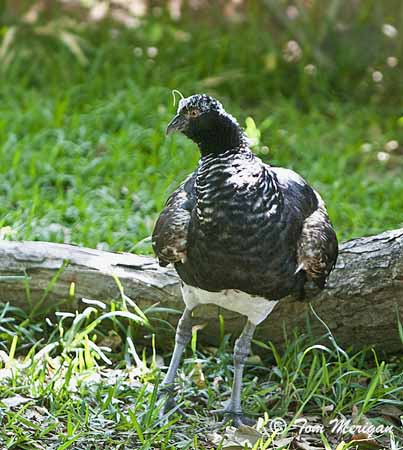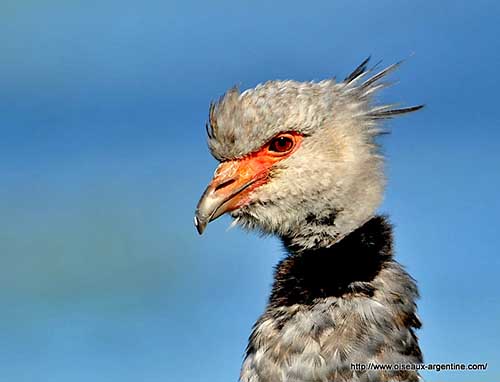
Text by Nicole Bouglouan
Photographers:
Roger Ahlman
Pbase Galleries Peru and Ecuador
Didier Buysse
Vision d’Oiseaux
Eduardo Andrés Jordan
MIS AVES – AVES DE ARGENTINA
Tom Merigan
Tom Merigan’s Photo Galleries
Otto Plantema
Trips around the world
Philippe et Aline Wolfer
GALERIE
Sources:
HANDBOOK OF THE BIRDS OF THE WORLD vol 1 by Josep del Hoyo-Andrew Elliot-Jordi Sargatal - Lynx Edicions - ISBN: 8487334105
A GUIDE TO THE BIRDS OF COLOMBIA by Steven L. Hilty and William L. Brown - Princeton University Press – ISBN 069108372X
L’ENCYCLOPEDIE MONDIALE DES OISEAUX - Dr Christopher M. Perrins - BORDAS - ISBN: 2040185607
BirdLife International (BirdLife International)
Wikipedia, the free encyclopaedia
Wikipedia, la enciclopedia libre
Animal Diversity Web (University of Michigan Museum of Zoology)
CREAGUS@Monterey Bay (Don Roberson)
El Zoológico Electrónico (Damisela)
FAMILY ANHIMIDAE
Order Anseriformes
Screamers
The large, heavily-built screamers were for a long time classified as Galliformes due to their appearance, especially the small chicken-like head and bill. Actually, they are primitive Anseriformes, close to the Magpie Goose (Anseranas semipalmata) of Australia. Recent studies using DNA suggest that the latter is closer to the screamers than to the other Anatidae. Screamers are included within the order Anseriformes and considered representatives of the evolutionary line leading to ducks, geese and swans.
The family Anhimidae comprises three South American species. The two species of genus Chauna, the Northern Screamer (Chauna chavaria) and the Southern Screamer (Chauna torquata), have almost similar morphology, behaviour and habitat requirements whereas the Horner Screamer (Anhima cornuta) of genus Anhima has several physical peculiarities.

Screamers are large walking birds fairly similar to geese. Their physical appearance includes mostly black, grey or brown plumage with brighter white markings on head, neck or wings, short downcurved bill with rudimentary lamellae and horny tongue, strong legs, three basally webbed front toes and one elongated, but not raised, hind toe. They have two sharp, long, curved spurs protruding from the bend of the wing, probably related to territorial fighting. These spurs are renewed periodically, and can be fairly loose at times. These large birds of up to 95 centimetres in length can weigh as much as 5 kilograms. However, the bone structure is very light.
Both sexes are similar in plumage, but females are slightly smaller than males. The fully grown juveniles resemble adults.
The three species have head ornaments. Chauna species have a tuft of feathers on the nape, while Anhima has long, slender cartilaginous appendage growing on the forehead. It appears quite brittle and can break, but it probably regrows. These ornaments are used during displays.
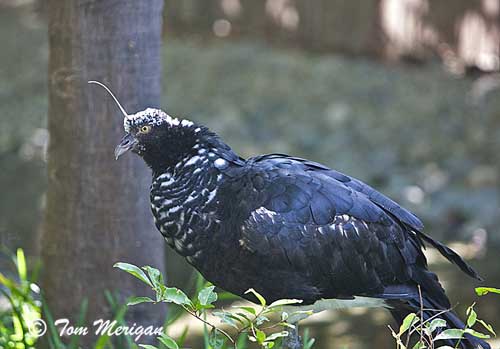
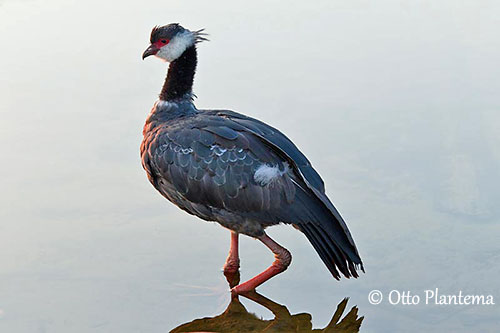
This morphology is well adapted for walking through and on the floating marsh vegetation. Screamers rarely swim although they are quite able of doing so even at an early age. But they are not known to dive.
They are good fliers thanks to the long, broad wings, but take-off requires heavy wingbeats. Once under way, they glide along with outstretched neck. The Southern Screamer regularly soars to great height.
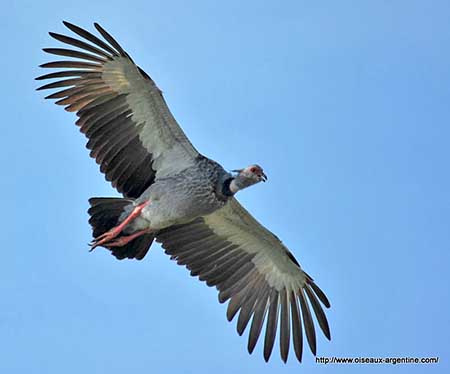
The Northern Screamer occurs in N Colombia and NW Venezuela. The Southern Screamer is found in Bolivia and S Brazil to N Argentina. The Horned Screamer occurs in tropical S America, from Colombia through Brazil to N Argentina.
They often congregate in large groups outside the breeding season and perform erratic movements during the winter, probably related to weather conditions and food availability. However, the Horned Screamer tends to remain all year round in pairs on the breeding grounds, only moving in small groups through the adjacent areas.
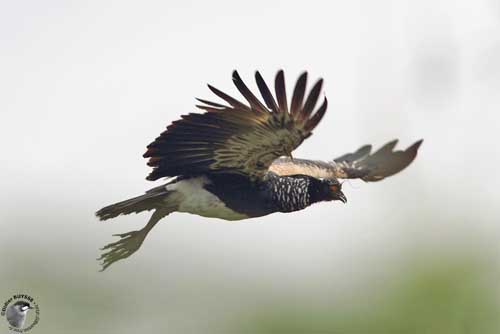
The three species frequent open savanna, marshes, meadowlands and lakes with dense vegetation, although both the Horned Screamer and Southern Screamer prefer flat, uncultivated plains. The Northern Screamer is mainly found in marshes with thick vegetation.
They remain in this type of habitat all year round, although during the breeding season, they nest close to the water. This location allows the chicks to escape from terrestrial predators. Outside the breeding season, they can be seen feeding in drier sites such as fields of crops.
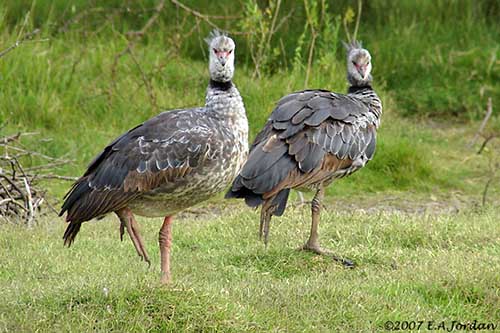
Pair
Screamers are mainly herbivorous, feeding on leaves, flowers, seeds and roots of several aquatic plants. During the breeding season, they consume small quantities of insects, especially the Horned Screamer, but they are primarily used for feeding the chicks, or taken by the chicks themselves. However, some arthropods or small animals are often swallowed while eating plant matter.
They feed by grazing and pecking at the fleshy parts of plants while walking along, sometimes with the body half submerged, depending on the area. They may occasionally dig the mud in shallow water, like the Magpie Goose.
As they often mix with domestic birds when feeding in fields of crops, they are sometimes considered pests by farmers.
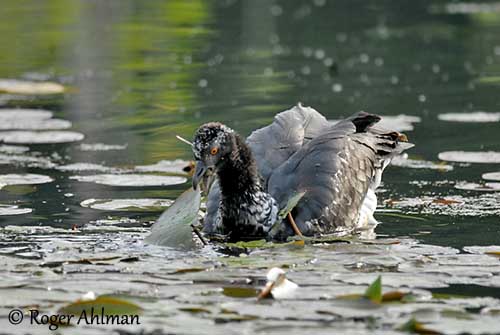
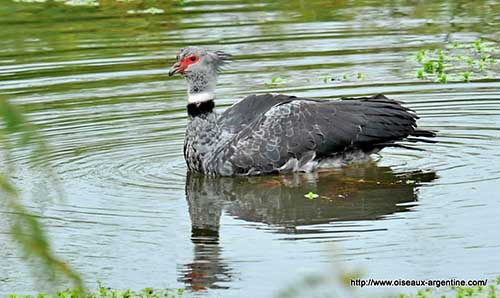
They are mainly diurnal. They gather in large groups to roost, standing up in shallow water in pools, but the Horned Screamer often spends the night in a tree. This species is less gregarious and is generally more solitary than the two Chauna species.
But all species spend long periods resting in trees too, often perched at top, very visible from far off. When alarmed, they fly straight up into a tree and call loudly. The territory is proclaimed from treetop with help of strident calls.
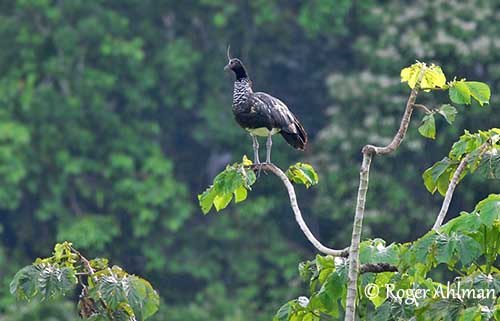
Screamers are highly vocal and the volume of their voice is audible at three kilometres away. During the breeding season, mates perform interminable duets and are very noisy. They also call while flying, and large groups often produce a deafening noise. They can produce a noisy chorus at dusk from the roost.
They usually produce an almost guttural gruff, a kind of drumming or cracking. Actually, this sound is used in threat behaviour and is produced not by the voice, but by the sudden collapse of the subcutaneous air-sacs in the sides of the neck.
The Southern Screamer gives harsh, double-noted trumpeting call, while the Horned Screamer has exceptional voice. The male’s voice is slightly lower-pitched than that of the female.
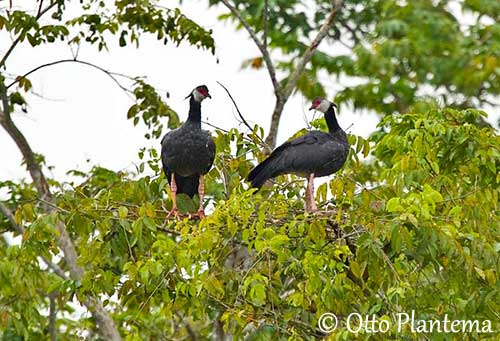
Pair
Screamers are monogamous with long-term pair-bonds. They may nest at any time of the year with a peak between October and December, and are solitary nesters. They maintain a breeding territory which is defended against intruders of all species. The most territorial is the Horned Screamer. It uses its loud voice to mark the boundaries and defend its territory. It performs threatening postures, spreading the wings to display the spurs and the reddish mark of the wing, the latter is lacking in the two Chauna species.
In all species, the wing spurs can be used during fights, and aerial pursuits are common to chase away the approaching intruders.
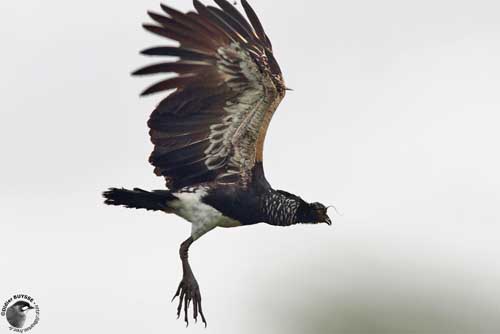
In order to strengthen the pair-bonds, both mates call in duet and perform mutual preening. Another displays show the birds walking side by side, or adopting a posture with the head thrust right back until almost touching the back. The copulation occurs on the ground (not in the water), during which the male pecks the female on the nape.
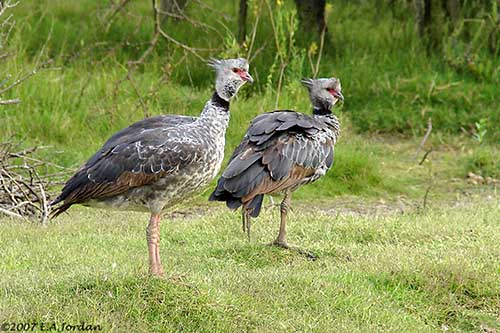
Pair
Both adults build the nest, a pile of weeds, reeds and sticks placed on the dry ground but near water, or in shallow water. The nest can be quite large. The nest materials are collected in the vicinity of the nest, but also further afield.
The female lays two to seven large, white eggs with pale markings. They are laid at two days intervals. The incubation is shared by both sexes and lasts about 42-45 days. If both parents leave the nest, the eggs are covered with some vegetation.
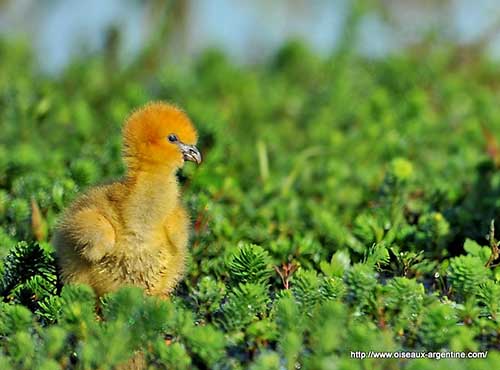
At hatching, the chicks have thick yellowish down. They are precocial and can leave the nest immediately. However, they remain around the nest and follow the adults. During the first week, they spend most of time in the water for their safety. The adults do not feed the chicks directly, but gather food and drop it for helping them.
They fledge about 8-10 weeks after hatching and are fully independent at 12-14 weeks old and perform post-breeding dispersal.
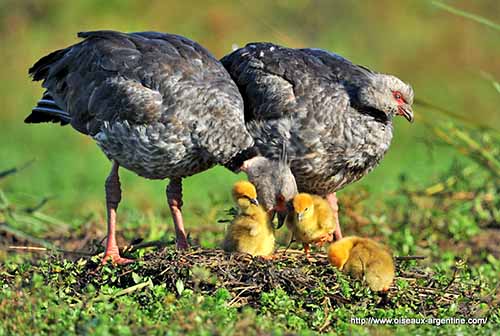
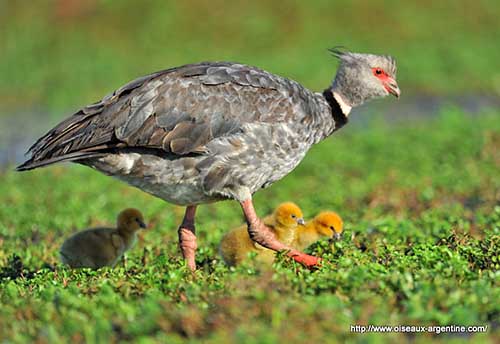
At nest
Screamers are sometimes regarded as pests, as for their powerful calls or for their relative abundance. Hunters do not like them because these birds give alarm calls as soon as hunters are coming, warning all other animals of their presence. Farmers try to keep them away from their cultivated fields.
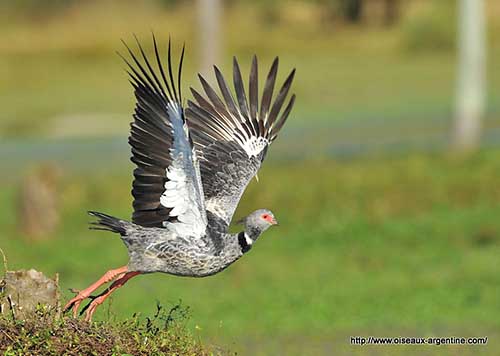
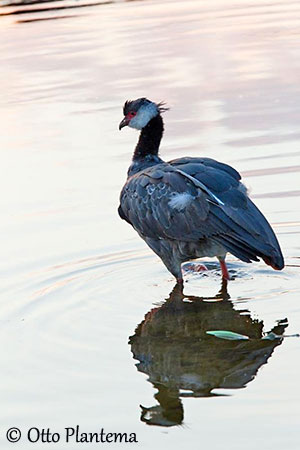
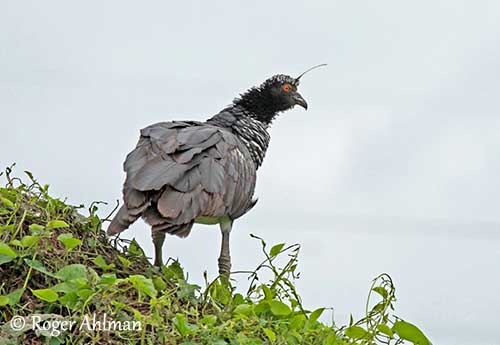
The Southern Screamer and the Horned Screamer are not currently threatened. Both species are still widespread or locally common, and their habitat remains more or less intact.
But the Northern Screamer is considered Near Threatened with small, declining population. It has reduced range and is affected by destruction of its habitat by drainage of wetland for agriculture expansion. It can be locally common in some areas.
Screamers get their name from their powerful, loud vocalizations which can be heard at great distance.
